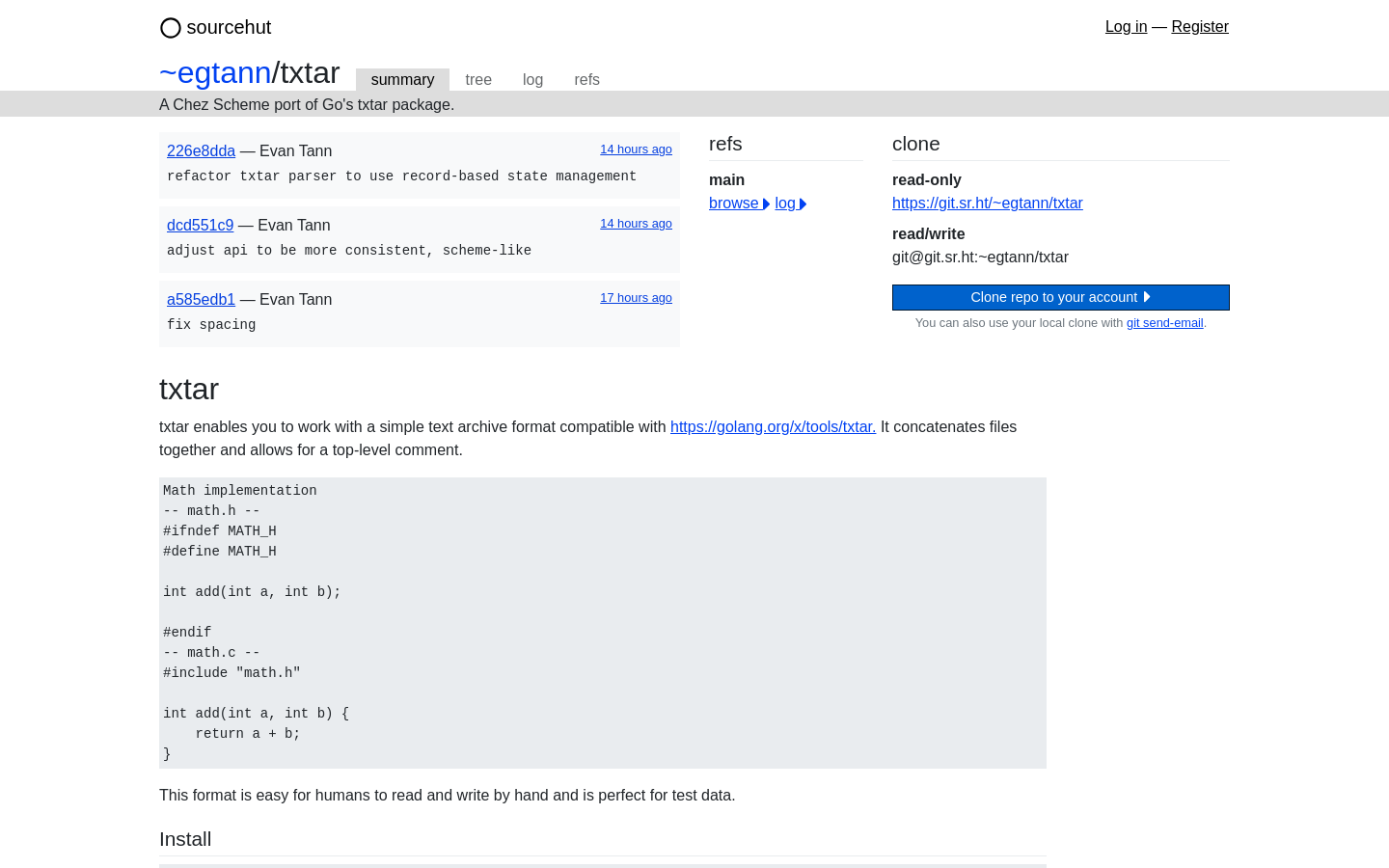

Highlight 1
The library effectively simplifies the management of test data by allowing multiple files to be concatenated into a single, easily readable format.
Highlight 2
The design prioritizes human readability and ease of use, making it accessible for users who may not have extensive programming experience.
Highlight 3
It adheres to Scheme standards by utilizing SRFIs, which enhances its compatibility and stability within the Scheme ecosystem.

Improvement 1
The lack of comprehensive documentation may hinder new users from fully utilizing the library's features; enhancing documentation and providing examples would be beneficial.
Improvement 2
The user interface (if any exists) could be designed for better engagement, perhaps including a graphical representation of the txtar format to assist users in understanding.
Improvement 3
Offering support for additional languages could broaden the user base and make the tool more accessible to non-English speaking users.
Product Functionality
Providing a more interactive demo of txtar's features could enhance user engagement and understanding of its capabilities.
UI & UX
Improving the website's user interface with clearer navigation and visual aids would help users find resources more easily.
SEO or Marketing
Implementing a blog or tutorial section focused on the use cases of txtar could improve search engine visibility and attract users interested in data management.
MultiLanguage Support
Consider offering the website and documentation in multiple languages to reach a broader audience and cater to non-English speakers.
- 1
What is txtar used for?
txtar is used for concatenating files into a single, readable archive format that is particularly suited for managing test data.
- 2
Is txtar easy to use for beginners?
Yes, txtar is designed to be user-friendly and human-readable, making it accessible even for those who are relatively new to programming.
- 3
Does txtar have any dependencies?
txtar is built to follow Scheme standards and depends only on SRFIs, ensuring compatibility and stability.
